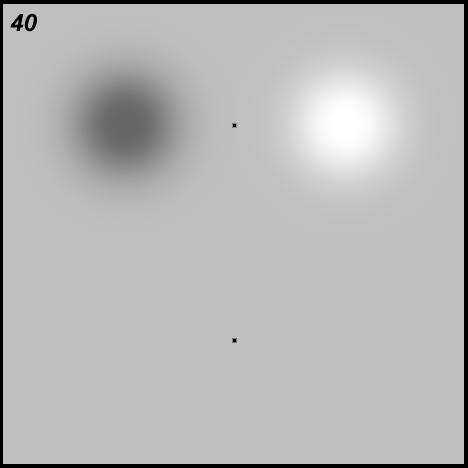The Neural
Control of Vision
I. Adaptation and Afterimages
That the change in the ratio of the
photopigment is the most important signal for ganglion cells can readily
by demonstrated. When the rate at which photons are delivered to the eye
is kept constant, within a very short time, measured in seconds, we lose
the percept because a steady state is reached in the ratio of the pigment
molecules. The perceptual effect is demonstrated in Figure
40 using gaussian stimuli to minimize the effects of eye tremor.
This figure has two little sharp fixation spots and two blobs, one light
and one dark. Fixate on the upper fixation spot for about 20 seconds and
you will notice that the blobs disappear. Normally this does not happen
because our eyes are constantly on the move.

Now one can consider another
phenomenon related to adaptation using this same figure. This is the phenomenon
of afterimages that are most common when we are exposed to bright light.
Once again, fixate on the upper fixation spot in Figure
40. After the blobs disappear shift your gaze to the lower
fixation spot. You will now see two distinct negative afterimages. Where
the dark blob had been you now see a light spot; the reverse is the case
on the other side.
|
